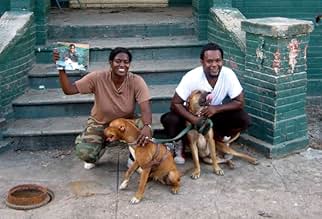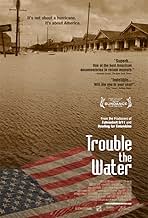A redemptive tale of an aspiring rap artist surviving failed levees and her own troubled past and seizing a chance for a new beginning.A redemptive tale of an aspiring rap artist surviving failed levees and her own troubled past and seizing a chance for a new beginning.A redemptive tale of an aspiring rap artist surviving failed levees and her own troubled past and seizing a chance for a new beginning.
- Nominated for 1 Oscar
- 7 wins & 14 nominations total
- Self
- (archive footage)
- Self
- (archive footage)
- Self - Reporter
- (archive footage)
- (as Julie Chen)
- Self
- (archive sound)
- (voice)
- Self
- (archive footage)
- (uncredited)
Featured reviews
The most amazing footage is the pre-Katrina scenes. Kimberly knows her neighborhood and is a real person. She asks people what they are going to do about the hurricane her uncle buys another bottle of booze, stumbles home, while a 10-year-old pigtailed niece flashes a gang sign, and declares she is not scared of any water.
While I know that neighborhoods like this exist it is still shocking to see people live like this first hand in America. One of the sad strange truths that ooze out of the film is that Katrina is the best thing that ever happened to Kimberly and her friends. The disaster probably saved her life or at the very least gave her a chance at a new one.
Orphaned at 13 when her mother died of AIDS Kimberly is no shrinking violet and she certainly tells it like it is. While Michael Moore veterans Carl Deal and Tia Lessin add structure and social commentary to the film this is Kimberly’s show. The show is both moving and truly fascinating.
There are several striking images in the film, including a recording of a 911 call in which an woman requesting help can't get out of her attic which is flooding. The 911 attendant has to inform her that there is no help at this time, and the victim replies, "So I'm going to die?" Silence on the other end of the line.
It seems like the majority of the film is snatched from the video camera of a survivor, as such the footage can be, well, not professional, but in the end it doesn't matter, perhaps even adding to the realism. It turns out that the couple filming is a set of intriguing characters with admirable qualities. They are from the ninth ward, a poor section of New Orleans hit hardest by the storm, yet for those of us without that much contact with society's underbelly or the semi-destitute, they will probably surprise you with their values, intelligence, resolve and resourcefulness.
The strength of the film for me was not in any attempts at blame or inciting anger at a lack of assistance and the seeming complacency of leadership, but in a reflection on the human struggle, manifested through an inspiring family, and in a basic reminder to examine, nourish, and befriend your own community.
This is a magnificent use of home video built in to a rage against poverty and illiteracy and racism. You can blame the victims here all you want, but image after image, scene after scene the plight of being an African American in this country is shoved in their faces...and in ours.
The lives of this family in the Lower 9th Ward are vividly drawn by themselves. When they confront what is outside, i.e., the post-segregation South, we are startled at the condescension, scorn and devaluation of human lives...if your skin is the wrong color.
The people here have no apologies for their lives. They lay it out and I suspect many will resist what struggles they face. But scene after scene, you can't walk away from this film without a better understanding of racism in America.
The stubborn will ask "Why didn't they leave when they were supposed to?" And this film records "How were they supposed to?" and "Where were they going to go?" In the face of it all, those who survive manage here to triumph. While the footage of the disaster is why most people will buy the ticket to see this, it's the struggle to survive, not only Katrina, that will last in the viewer's mind.
Hurricane Katrina, like the September 11 attacks (whose tenth anniversary is in a few days), is something that should always be remembered, maybe more so. It showed how detached the government had become from its most vulnerable citizens. The collapse of the levees and subsequent flooding of the Lower Ninth Ward became an excuse to dismantle New Orleans's public school system and replace it with vouchers. The documentary is even more relevant now, after Louisiana got a second strike in the form of the Deepwater Horizon spill.
Did you know
- Quotes
elderly woman: The water is steady rising in the attic ma'am and I'm gonna drown in the attic.
9/11 dispatcher: Can you break a hole in the attic?
elderly woman: I tried. I broke a chair for it. I cannot pry this wood off this attic ma'am.
9/11 dispatcher: The police are not coming out until the weather conditions get better.
elderly woman: [long pause] So I'm gonna die.
[long pause]
elderly woman: Hello?
9/11 dispatcher: Yes.
elderly woman: I can't get out.
- SoundtracksHurricane Waters
Performed by Citizen Cope
- How long is Trouble the Water?Powered by Alexa
Details
Box office
- Budget
- $900,000 (estimated)
- Gross US & Canada
- $520,151
- Opening weekend US & Canada
- $28,606
- Aug 24, 2008
- Gross worldwide
- $522,766
- Runtime1 hour 30 minutes
- Color
- Sound mix
- Aspect ratio
- 1.85 : 1
Contribute to this page































